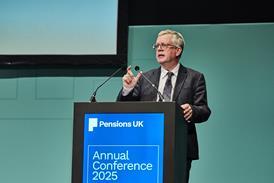Three out of four pensions professionals say employers should be free to statutorily enrol any employee they wish, even if current auto-enrolment age and earnings criteria are not met.
A survey of Society of Pension Professionals members found that many support a revision to auto-enrolment rules to sweep up younger and lower-paid employees, among other recommendations for simplification.
Under current legislation, employers must establish a separate legal authority to enrol any worker who does not meet criteria including age and total earnings.
Many employers simply want to just auto-enrol everyone, and why not?
Mark Bondi, Capita Employee Benefits
According to experts, many companies get around this by operating contractual enrolment, where employees consent to join a scheme through their contract of employment, before the auto-enrolment process starts.
Industry experts speaking to Pensions Expert were overwhelmingly in favour of the SPP’s proposal for simplifying this situation.
“Many employers simply want to just auto-enrol everyone, and why not?” asked Mark Bondi, senior technical consultant at Capita Employee Benefits.
He added that setting up a contractual enrolment regime is frustrating for employers: “The clear basis in legislation only applies for statutory automatic enrolment, not contractual enrolment. Therefore, reliance must be placed on contractual terms, cancellation rights, and acting before preservation legislation prevents a refund. There is also the need to secure proper consents to deductions and the use of data. So, some careful design points have to be attended to.”
Government intervention needed
Adjusting auto-enrolment legislation to clear the path for employers who want to give all their staff a pension from their first day of work would simplify this process. But doing so would require buy-in from government.
John Foster, principal consultant at Aon, said he supports the idea, but pointed out: “The age trigger, earnings trigger and lower-earnings threshold would need to be made non-mandatory in order for this to be possible.”
However, doing nothing “is creating a pensions ‘underclass’ of younger and lower-paid employees”, according to Sue Waites, a partner at Hymans Robertson.
“This doesn’t sit comfortably with some employers, who have turned to contractual enrolment to fix the problem,” she said.
However, not everyone is convinced. Adrian Boulding, director of policy at Now Pensions, called the report “a well-meaning but fatally flawed intervention by the SPP”.
“The vast majority of employers follow the auto-enrolment legislation precisely, and the last they want is to start having to exercise their discretion. They would have to hire an adviser to help them reach a decision, and the hundreds of thousands of small and micro employers simply can’t afford advice,” he said.
AE simplification urged
Among the SPP’s other simplification recommendations, 80 per cent of members favoured removing the minimum age criteria – a reform that has been proposed by the government but subsequently delayed until the mid-2020s. Two-thirds said auto-enrolment should be extended to all employees up to age 75.
Mr Bondi stressed: “The 2017 Automatic Enrolment Review has already greenlighted the reduction in the minimum age for automatic enrolment from 22 to 18, freedom and choice has transformed people’s retirement options, and the default retirement age is long gone. Given the burden of data collection, is there any value in using age as a criterion in deciding whether a person is auto-enrolled or not? After all, if enrolment is unsuitable for them, any worker can always opt out.”
There was also overwhelming support for proposals to use the pay in the previous pay period to determine eligibility for enrolment. Meanwhile, 63 per cent of SPP members said employers should be allowed to accept opt-out elections up to three months after enrolment.
Hundreds of thousands of micro pots suffer remorseless attrition
Data crunch: Eight years after the auto-enrolment revolution, millions of workers’ pensions are left languishing in master trusts when they move jobs.
Eighty-four per cent favoured raising the minimum employer contributions from 3 per cent to 6 per cent of earnings.
Why £10,000 threshold still stands
While experts want to see the earnings trigger diluted by affording employers more flexibility, the government on Thursday doubled down on it decision to maintain the AE earnings trigger at £10,000 for the next year.
A review document argued that the government needs to protect affordability for both employers and individuals, adding that very low earners will end up with pots of insignificant size: “This represents a real term decrease in the value of the trigger when combined with assumed wage growth, and will bring in an additional 80,000 individuals into the target population.”
The link between the qualifying earnings threshold and the National Insurance contributions lower earnings limit will also remain unchanged at £6,240, although the review stated that it remains the government’s ambition to remove the lower earnings limit by the mid-2020s.






















